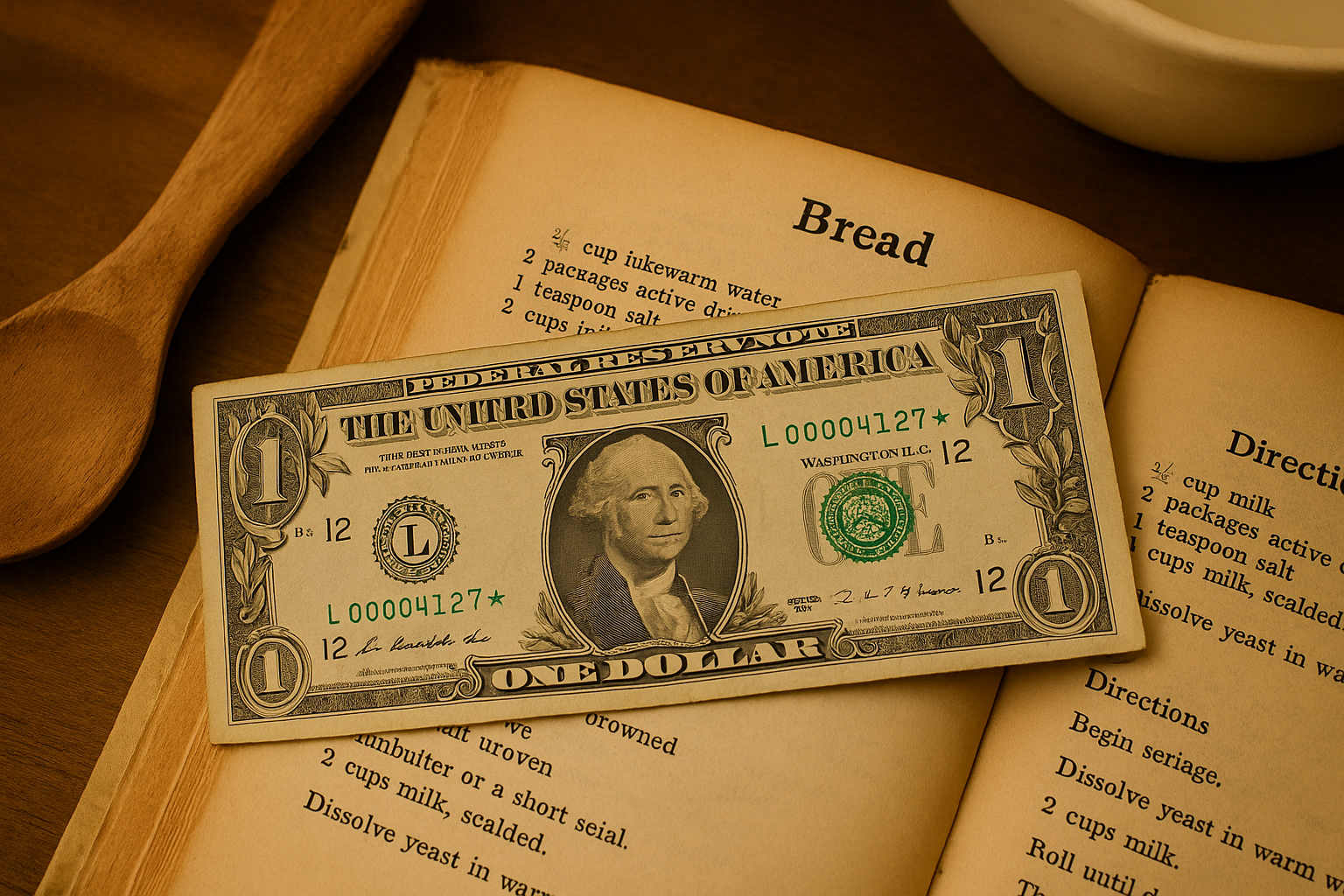While flipping through a family cookbook passed down for generations, a Texas resident uncovered a rare $1 star note slipped between the yellowed pages of a bread recipe. What initially appeared to be an ordinary bill soon revealed its unique status — a 1969B series star note, preserved in crisp condition. After expert verification and certification, it fetched $13,200 at auction, proving that rare currency can still be hiding in everyday places.
What Is a Star Note?
A star note is a replacement banknote printed by the Bureau of Engraving and Printing to substitute for a misprinted or damaged bill during production. Instead of a standard serial number, these notes end with a star (*), indicating their status as replacements. Because they are printed in significantly lower quantities than regular notes, some star notes — especially those with low serial numbers, older series, or printing errors — are considered highly collectible.
Although star notes are not printed by the U.S. Mint (which handles coins), they are an official product of the U.S. Department of the Treasury and are tracked and graded similarly to coins.
Why This $1 Star Note Was So Valuable
The note discovered in this case was a 1969B $1 star note from the San Francisco Federal Reserve Bank, a scarce variety with limited known surviving examples in uncirculated condition. According to paper money collectors, fewer than 3,000 examples of this note series and district pairing are believed to exist.
Additional factors that contributed to its value:
- Uncirculated condition (graded Gem CU65)
- Short print run from a rare district (L – San Francisco)
- Matching block letters and serial rarity
- A desirable fancy serial number (00004127*)
$1 Star Note Value Guide by Series
Below is a general valuation guide based on notable $1 star note series and conditions:
| Series | Rarity | Circulated Value | Uncirculated Value |
|---|---|---|---|
| 1963B | Common | $2 – $10 | $25 – $75 |
| 1969B | Scarce | $50 – $400 | $2,500 – $14,000 |
| 1974 | Semi-common | $5 – $25 | $75 – $150 |
| 1995 | Common | Face value – $5 | $10 – $40 |
| 2017A | Recent | Face value | $5 – $15 unless fancy |
Collectors should verify serial numbers, block letter/district combinations, and condition before assuming value.
Where to Look for Star Notes
Many people unknowingly own valuable star notes. You can search for them in:
- Old wallets or savings envelopes
- Vintage books, diaries, and recipe folders
- Estate collections or inherited cash bundles
- Unsearched change jars or emergency kits
- Inside folded documents or money clip holders
Even modern $1 bills with star serial numbers can carry premiums if the note is uncirculated or features a low or fancy serial number.
How to Authenticate and Sell Your Star Note
Before listing a star note for sale, ensure it’s:
- Verified using paper money catalogs or online databases
- Graded or at least well-photographed in high resolution
- Identified by series, serial number, and block letter
- Stored safely in a non-PVC currency sleeve to preserve its condition
For high-value star notes, consider grading through PMG (Paper Money Guaranty) or PCGS Currency, then list it with reputable auction houses like Heritage Auctions or Stacks Bowers.
Conclusion
The $1 star note tucked inside an old cookbook is a reminder that not all treasure shines in gold or silver. With a unique backstory, print rarity, and nearly pristine condition, this bill transformed from forgotten currency into a collector’s prize. As numismatic interest in small-denomination paper money grows, don’t overlook your old $1 bills — one with a star could be worth thousands.
FAQs
What makes a $1 star note valuable?
Value depends on series year, print run size, condition, serial number pattern, and the issuing Federal Reserve district.
Are star notes still printed today?
Yes, the Bureau of Engraving and Printing still issues star notes when damaged bills are pulled during production runs.
Can I find valuable star notes in circulation?
Yes, but it’s rare. Check your change for star serial numbers, especially on older bills. Uncirculated notes hold the most value.

